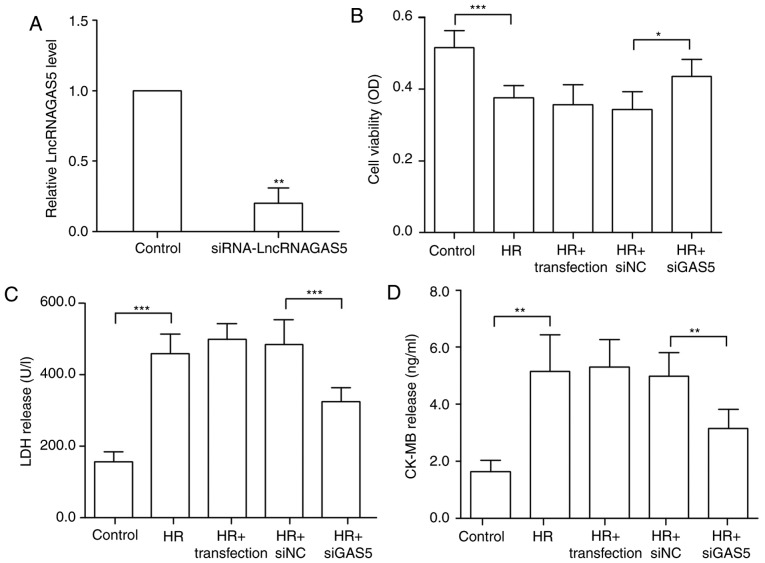Figure 2.
Silencing of lncRNA GAS5 is able to protect H9c2 cells against HR injury. (A) H9c2 cells were transfected using siGAS5, and it was verified that the silencing efficiency reached 80%. **P<0.01 vs. the control. (B) Silencing of lncRNA GAS5 significantly improves cell viability as demonstrated by Cell Counting Kit 8 assays. (C) Release levels of LDH. (D) Release levels of CK-MB. *P<0.05, **P<0.01 and ***P<0.001 with comparisons shown by lines. n=3. Data are presented as the mean ± standard deviation. Control, cells with a normal culture; HR, cells with hypoxia/reoxygenation injury treatment; HR+transfection, cells with hypoxia/reoxygenation injury and transfection reagent only; HR+siNC, cells with hypoxia/reoxygenation injury and negative control transfection; HR+siGAS5, cells with hypoxia/reoxygenation injury and siRNA-GAS5 transfection; lncRNA, long non-coding RNA; GAS5, growth arrest specific 5; si/siRNA, small interfering RNA; NC, negative control; HR, hypoxia-reoxygenation; LDH, lactate dehydrogenase; CK-MB, creatine kinase isoenzyme; OD, optical density.

